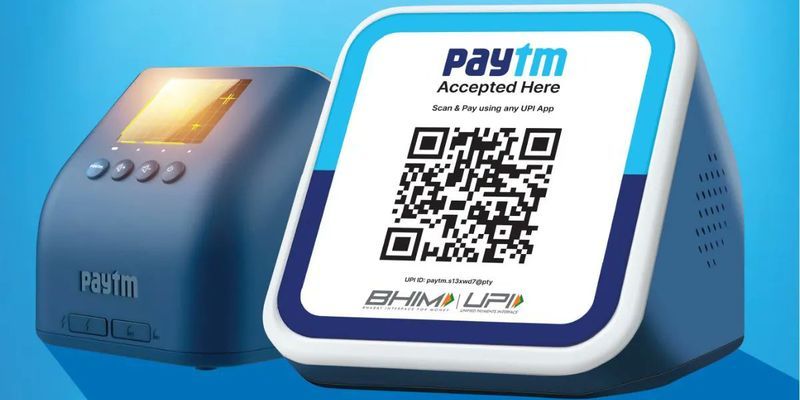Copyright yourstory

In the crowded streets of India's cities, a familiar sound has become synonymous with digital payments: a voice announcing incoming money to shopkeepers through small speakers. Now, Paytm is betting that the humble device behind that voice — its Soundbox — can evolve from a simple payment alert tool into something far more ambitious. Vijay Shekhar Sharma, Paytm's founder and CEO, revealed in its latest earnings call that it is working on what it calls "India's first AI Soundbox," designed to transform the device from a payment notification system into an intelligent business assistant. Soundbox strategy The Soundbox strategy has become central to Paytm's merchant payments business, which forms the core of its operations. As of September 2025, the company had 13.7 million merchant device subscriptions, up 2.5 million from the previous year. Each Soundbox subscription creates an anchor point for Paytm’s relationship with the merchant: once deployed, it becomes the gateway for cross-selling loans, insurance, and marketing products. Executives describe it as the “first touchpoint” in a broader ecosystem that locks in merchants and drives recurring subscription revenue. The company's payment-related revenue (which includes device subscription fees and transaction processing margins) grew 25% year-over-year to Rs 1,223 crore in the quarter ending September 2025. Net payment revenue — essentially what Paytm keeps after paying processing charges — jumped 28% to Rs 594 crore. Paytm management credits the new device addition for the growth. Perhaps the most striking evolution in Paytm's hardware strategy has been its approach to device lifecycle management. The company has built an entire infrastructure around collecting inactive devices, refurbishing them, and redeploying them to new merchants. The financial impact is substantial. "The average cost of refurbishment, including reverse pickup cost, will be somewhere to the order of 25 to 30% of the cost of a new device," Deora told analysts. "So it reduces capex meaningfully." This matters because capital expenditure on devices was historically a major cost. In fiscal year 2024, Paytm spent Rs 814 crore on such investments; that figure had fallen to just Rs 317 crore in FY25. The refurbishment operation has become sophisticated. Paytm has moved beyond centralised facilities near its headquarters to establish regional hubs in multiple cities. "We created a house in different cities," Sharma said. "Earlier, it was based in our headquarters and near that, Noida, the factory, etc, but we have now created hubs to refurbish in multiple other cities." These devices, once collected, typically require minor work — often just a battery replacement or similar maintenance — before being redeployed as good as new. This strategy has allowed the company to add new merchant subscriptions while dramatically reducing the capital required. AI ambitions The company’s next evolution is the AI Soundbox, launched in pilot this quarter. Founder Vijay Shekhar Sharma described it as an “intelligent business assistant” that will do more than announce transactions. The new version can deliver real-time insights on payments, customer behaviour, and sales performance, effectively acting as a miniature data terminal for small merchants Small businesses can have "a Chief Operating Officer, Chief Finance Officer, or Chief Marketing Officer"— capable of answering questions like “Where is my revenue compared to others?” or even helping merchants run local ads and manage inventory. The Soundbox will eventually support multilingual translation and conversational interfaces, broadening its usability for India’s small-shop economy. Sharma told investors that Paytm plans to monetise these AI-enabled devices through subscription and inference fees, charging merchants for analytical and operational support services built into the Soundbox. “AI brings newer services, newer business, normally a larger number of things that we can do,” he said, calling it a “revenue line item” rather than just a cost efficiency tool. Back to BNPL After a year of retreat from small-ticket credit, Paytm is cautiously re-entering the consumer lending arena with a revamped “Postpaid” product, designed less as a comeback and more as a controlled experiment. The company relaunched Paytm Postpaid in September as a “Spend Now, Pay Next Month” overdraft facility on UPI, offered in partnership with Suryoday Small Finance Bank. The line gives customers up to 30 days of interest-free credit and works across all UPI QR codes—both within and outside the Paytm ecosystem. The rollout, management emphasised, remains limited to a select set of pre-qualified users. Chief Financial Officer Madhur Deora described the initiative as a measured comeback rather than a restart of Paytm’s earlier high-velocity lending model. “We are taking a cautious approach, learning from the last cycle,” he told analysts. “The intent is to scale only when we’re confident the portfolio quality and collection efficiency are fully aligned with our partners.” That caution stems from experience. The company had phased out its previous Postpaid and small-personal-loan products after asset-quality concerns across the industry, choosing instead to focus on acting purely as a distribution partner. “We are going to remain cautious even on merchant loans, to avoid any asset-quality deterioration beyond our partners’ thresholds,” Paytm said in its quarterly release. Sharma called the Postpaid relaunch “a responsible restart.” “We are seeing better collection performance for our partners, supported by our advanced AI models,” he told investors, hinting that improved analytics and risk prediction tools could make this iteration more durable. (Edited by Jyoti Narayan)



